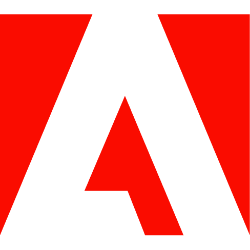PLTR

Palantir Technologies Inc.
PLTR
(2.5)79,35 USD
7.79% ROA
12.07% ROE
228.65x PER
88.799.164.000,00 USD
6.38% DER
0% Yield
18.01% NPM
Palantir Technologies Inc. Stock Analysis
Palantir Technologies Inc. Fundamental Analysis
Fundamental analysis in stock investing is like studying the foundation of a house before buying it. It involves looking at a company's financial health, like its earnings, assets, and debts, to determine if it's a good investment based on its fundamental strength and potential for growth.
| # | Analysis | Rating |
|---|---|---|
| 1 |
DER
The stock has a minimal amount of debt (7%) relative to its ownership, showcasing a strong financial position and lower risk for investors. |
|
| 2 |
Revenue Growth
With continuous growth in revenue over the last five years, this company has proven to be a lucrative investment option, showcasing its strong financial performance. |
|
| 3 |
Assets Growth
This company's revenue has experienced steady growth over the last five years, indicating a reliable and prosperous financial trajectory. |
|
| 4 |
ROE
ROE in an average range (5.15%) suggests satisfactory profitability and decent utilization of shareholders' equity. |
|
| 5 |
ROA
The stock's ROA (3.51%) shows that it's doing a pretty good job at making money from its assets, making it a solid choice to invest and earn steady profits. |
|
| 6 |
Net Profit Growth
With continuous net profit growth in the past three years, this company demonstrates a strong financial performance, making it an enticing investment opportunity. |
|
| 7 |
Buffet Intrinsic Value
The company's stock seems undervalued (125) by Warren Buffett's formula, indicating a promising investment opportunity as its intrinsic value exceeds the market price. |
|
| 8 |
PBV
The stock's elevated P/BV ratio (13.89x) raises concerns about its overvaluation, making it an imprudent choice for investors seeking value. |
|
| 9 |
Graham Number
Based on the Graham number, this company's stock price appears to be higher than its intrinsic value, signaling a potentially unfavorable investment choice. |
|
| 10 |
Dividend Growth
The company's dividend growth has remained unchanged for three years, signaling a lack of positive momentum and making it a less favorable investment choice. |
|
| 11 |
Dividend
No dividends from the company in the past three years raises doubts about its profitability for shareholders. |
Palantir Technologies Inc. Technical Analysis
Technical analysis in stock investing is like reading the patterns on a weather map to predict future weather conditions. It involves studying past stock price movements and trading volumes to make predictions about where a stock's price might go next, without necessarily looking at the company's financial health.
| # | Analysis | Recommendation |
|---|---|---|
| 1 | Awesome Oscillator | Hold |
| 2 | MACD | Sell |
| 3 | RSI | Hold |
| 4 | Stoch RSI | Buy |
Palantir Technologies Inc. Price Chart
Financial Statements
Financial statements are like report cards for companies. They show how much money a company makes (income statement), what it owns and owes (balance sheet), and where it spends its money (cash flow statement), helping stock investors understand if a company is healthy and worth investing in.
Income Statements
An income statement for a company is like a scoreboard for its profits and losses. It shows how much money the company made (revenue) and how much it spent to make that money (expenses), helping stock investors see if a company is making a profit or not.
Revenue in stock investing is the total amount of money a company earns from its sales, and it's a key factor that investors consider to assess a company's financial performance and growth potential.
| Year | Revenue | Growth |
|---|---|---|
| 2018 | 595.409.000 | |
| 2019 | 742.555.000 | 19.82% |
| 2020 | 1.092.673.000 | 32.04% |
| 2021 | 1.541.889.000 | 29.13% |
| 2022 | 1.905.871.000 | 19.1% |
| 2023 | 2.232.636.000 | 14.64% |
| 2023 | 2.225.012.000 | -0.34% |
| 2024 | 2.712.536.000 | 17.97% |
Research and Development Expenses are the costs a company incurs to create and improve its products or services, which can be important for investors to evaluate a company's innovation and potential for future growth.
| Year | Research and Development Expenses | Growth |
|---|---|---|
| 2018 | 285.451.000 | |
| 2019 | 305.563.000 | 6.58% |
| 2020 | 560.660.000 | 45.5% |
| 2021 | 387.487.000 | -44.69% |
| 2022 | 359.679.000 | -7.73% |
| 2023 | 422.832.000 | 14.94% |
| 2023 | 404.624.000 | -4.5% |
| 2024 | 435.124.000 | 7.01% |
General and Administrative Expenses are the costs a company incurs to run its day-to-day operations, such as office rent, salaries, and utilities, which investors consider to understand a company's overall efficiency and management effectiveness.
| Year | General and Administrative Expenses | Growth |
|---|---|---|
| 2018 | 306.235.000 | |
| 2019 | 320.943.000 | 4.58% |
| 2020 | 669.444.000 | 52.06% |
| 2021 | 611.532.000 | -9.47% |
| 2022 | 596.333.000 | -2.55% |
| 2023 | 512.692.000 | -16.31% |
| 2023 | 524.325.000 | 2.22% |
| 2024 | 554.572.000 | 5.45% |
EBITDA stands for Earnings Before Interest, Taxes, Depreciation, and Amortization. It is a measure that helps stock investors analyze a company's profitability by looking at its earnings without considering certain expenses. This helps to get a clearer picture of the company's financial performance and its ability to generate cash flow.
| Year | EBITDA | Growth |
|---|---|---|
| 2018 | -553.685.000 | |
| 2019 | -552.010.000 | -0.3% |
| 2020 | -1.151.017.000 | 52.04% |
| 2021 | -469.957.000 | -144.92% |
| 2022 | -334.447.000 | -40.52% |
| 2023 | 357.496.000 | 193.55% |
| 2023 | 153.320.000 | -133.17% |
| 2024 | 453.580.000 | 66.2% |
Gross profit is the money a company makes from selling its products or services after subtracting the cost of producing or providing them, and it is an important measure for investors to understand a company's profitability.
| Year | Gross Profit | Growth |
|---|---|---|
| 2018 | 430.008.000 | |
| 2019 | 500.182.000 | 14.03% |
| 2020 | 740.126.000 | 32.42% |
| 2021 | 1.202.485.000 | 38.45% |
| 2022 | 1.497.322.000 | 19.69% |
| 2023 | 1.800.948.000 | 16.86% |
| 2023 | 1.793.907.000 | -0.39% |
| 2024 | 2.198.288.000 | 18.4% |
Net income in stock investing is like the money a company actually gets to keep as profit after paying all its bills, and it's an important measure to understand how well a company is doing financially.
| Year | Net Profit | Growth |
|---|---|---|
| 2018 | -580.027.000 | |
| 2019 | -579.646.000 | -0.07% |
| 2020 | -1.166.391.000 | 50.3% |
| 2021 | -520.379.000 | -124.14% |
| 2022 | -373.705.000 | -39.25% |
| 2023 | 286.020.000 | 230.66% |
| 2023 | 209.825.000 | -36.31% |
| 2024 | 536.504.000 | 60.89% |
EPS, or earnings per share, is a measure that shows how much profit a company has earned for each outstanding share of its stock, and it is important for stock investors as it helps understand the profitability of a company and compare it with other companies in the market.
| Year | Earning per Share (EPS) | Growth |
|---|---|---|
| 2018 | -1 | |
| 2019 | 0 | 0% |
| 2020 | -1 | 0% |
| 2021 | 0 | 0% |
| 2022 | 0 | 0% |
| 2023 | 0 | 0% |
| 2023 | 0 | 0% |
| 2024 | 0 | 0% |
Cashflow Statements
Cashflow statements show the movement of money in and out of a company, helping stock investors understand how much money a company makes and spends. By examining cashflow statements, investors can assess if a company is generating enough cash to pay its bills, invest in growth, and provide returns to stockholders.
Free cash flow is the leftover cash that a company generates after covering its operating expenses and capital expenditures, which is important for stock investors as it shows how much money a company has available to invest in growth, pay dividends, or reduce debt.
| Year | Free Cashflow | Growth |
|---|---|---|
| 2018 | -52.016.000 | |
| 2019 | -178.311.000 | 70.83% |
| 2020 | -308.844.000 | 42.27% |
| 2021 | 321.224.000 | 196.15% |
| 2022 | 183.710.000 | -74.85% |
| 2023 | 131.878.000 | -39.3% |
| 2023 | 697.069.000 | 81.08% |
| 2024 | 141.308.000 | -393.3% |
Operating cash flow represents the cash generated or consumed by a company's day-to-day operations, excluding external investing or financing activities, and is crucial for stock investors as it shows how much cash a company is generating from its core business operations.
| Year | Operating Cashflow | Growth |
|---|---|---|
| 2018 | -39.012.000 | |
| 2019 | -165.215.000 | 76.39% |
| 2020 | -296.608.000 | 44.3% |
| 2021 | 333.851.000 | 188.84% |
| 2022 | 223.737.000 | -49.22% |
| 2023 | 133.443.000 | -67.66% |
| 2023 | 712.183.000 | 81.26% |
| 2024 | 144.187.000 | -393.93% |
Capex, short for capital expenditures, refers to the money a company spends on acquiring or upgrading tangible assets like buildings, equipment, or technology, which is important for stock investors as it indicates how much a company is investing in its infrastructure to support future growth and profitability.
| Year | Capital Expenditure | Growth |
|---|---|---|
| 2018 | 13.004.000 | |
| 2019 | 13.096.000 | 0.7% |
| 2020 | 12.236.000 | -7.03% |
| 2021 | 12.627.000 | 3.1% |
| 2022 | 40.027.000 | 68.45% |
| 2023 | 1.565.000 | -2457.64% |
| 2023 | 15.114.000 | 89.65% |
| 2024 | 2.879.000 | -424.97% |
Balance Sheet
Balance sheets provide a snapshot of a company's financial health and its assets (such as cash, inventory, and property) and liabilities (like debts and obligations) at a specific point in time. For stock investors, balance sheets help assess the company's overall worth and evaluate its ability to meet financial obligations and support future growth.
Equity refers to the ownership interest or stake that shareholders have in a company, representing their claim on its assets and earnings after all debts and liabilities are paid.
| Year | Equity | Growth |
|---|---|---|
| 2018 | 0 | |
| 2019 | -1.980.642.000 | 100% |
| 2020 | 1.522.550.000 | 230.09% |
| 2021 | 2.291.030.000 | 33.54% |
| 2022 | 2.642.437.000 | 13.3% |
| 2023 | 3.560.965.000 | 25.79% |
| 2023 | 3.271.897.000 | -8.83% |
| 2024 | 4.137.806.000 | 20.93% |
Assets represent the valuable resources that a company owns, such as cash, inventory, property, and equipment, and understanding a company's assets helps investors assess its value and potential for generating future profits.
| Year | Assets | Growth |
|---|---|---|
| 2018 | 1.430.965.000 | |
| 2019 | 1.594.025.000 | 10.23% |
| 2020 | 2.690.504.000 | 40.75% |
| 2021 | 3.247.450.000 | 17.15% |
| 2022 | 3.461.239.000 | 6.18% |
| 2023 | 4.522.425.000 | 23.46% |
| 2023 | 4.193.417.000 | -7.85% |
| 2024 | 5.191.880.000 | 19.23% |
Liabilities refer to the financial obligations or debts that a company owes to creditors or external parties, and understanding a company's liabilities is important for investors as it helps assess the company's financial risk and ability to meet its obligations.
| Year | Liabilities | Growth |
|---|---|---|
| 2018 | 3.182.393.000 | |
| 2019 | 3.574.667.000 | 10.97% |
| 2020 | 1.167.954.000 | -206.06% |
| 2021 | 956.420.000 | -22.12% |
| 2022 | 818.802.000 | -16.81% |
| 2023 | 961.460.000 | 14.84% |
| 2023 | 921.520.000 | -4.33% |
| 2024 | 1.054.074.000 | 12.58% |
Palantir Technologies Inc. Financial Ratio (TTM)
Valuation Metrics
- Revenue per Share
- 1.11
- Net Income per Share
- 0.18
- Price to Earning Ratio
- 228.65x
- Price To Sales Ratio
- 35.82x
- POCF Ratio
- 130.58
- PFCF Ratio
- 127.51
- Price to Book Ratio
- 22.84
- EV to Sales
- 35.72
- EV Over EBITDA
- 242.02
- EV to Operating CashFlow
- 125
- EV to FreeCashFlow
- 127.14
- Earnings Yield
- 0
- FreeCashFlow Yield
- 0.01
- Market Cap
- 88,80 Bil.
- Enterprise Value
- 88,54 Bil.
- Graham Number
- 2.72
- Graham NetNet
- 1.54
Income Statement Metrics
- Net Income per Share
- 0.18
- Income Quality
- 1.74
- ROE
- 0.11
- Return On Assets
- 0.08
- Return On Capital Employed
- 0.08
- Net Income per EBT
- 0.93
- EBT Per Ebit
- 1.41
- Ebit per Revenue
- 0.14
- Effective Tax Rate
- 0.05
Margins
- Sales, General, & Administrative to Revenue
- 0.21
- Research & Developement to Revenue
- 0.17
- Stock Based Compensation to Revenue
- 0.21
- Gross Profit Margin
- 0.81
- Operating Profit Margin
- 0.14
- Pretax Profit Margin
- 0.19
- Net Profit Margin
- 0.18
Dividends
- Dividend Yield
- 0
- Dividend Yield %
- 0
- Payout Ratio
- 0
- Dividend Per Share
- 0
Operating Metrics
- Operating Cashflow per Share
- 0.32
- Free CashFlow per Share
- 0.31
- Capex to Operating CashFlow
- 0.02
- Capex to Revenue
- 0
- Capex to Depreciation
- 0.36
- Return on Invested Capital
- 0.06
- Return on Tangible Assets
- 0.08
- Days Sales Outstanding
- 97.08
- Days Payables Outstanding
- 53.28
- Days of Inventory on Hand
- 0
- Receivables Turnover
- 3.76
- Payables Turnover
- 6.85
- Inventory Turnover
- 0
- Capex per Share
- 0.01
Balance Sheet
- Cash per Share
- 1,79
- Book Value per Share
- 1,85
- Tangible Book Value per Share
- 1.85
- Shareholders Equity per Share
- 1.82
- Interest Debt per Share
- 0.12
- Debt to Equity
- 0.06
- Debt to Assets
- 0.05
- Net Debt to EBITDA
- -0.69
- Current Ratio
- 5.92
- Tangible Asset Value
- 4,14 Bil.
- Net Current Asset Value
- 3,72 Bil.
- Invested Capital
- 4223526999
- Working Capital
- 3,97 Bil.
- Intangibles to Total Assets
- 0
- Average Receivables
- 0,57 Bil.
- Average Payables
- 0,05 Bil.
- Average Inventory
- 0
- Debt to Market Cap
- 0
Dividends
Dividends in stock investing are like rewards that companies give to their shareholders. They are a portion of the company's profits distributed to investors, typically in the form of cash payments, as a way for them to share in the company's success.
| Year | Dividends | Growth |
|---|
Palantir Technologies Inc. Profile
About Palantir Technologies Inc.
Palantir Technologies Inc. builds and deploys software platforms for the intelligence community to assist in counterterrorism investigations and operations in the United States, the United Kingdom, and internationally. The company provides Palantir Gotham, a software platform which enables users to identify patterns hidden deep within datasets, ranging from signals intelligence sources to reports from confidential informants, as well as facilitates the handoff between analysts and operational users, helping operators plan and execute real-world responses to threats that have been identified within the platform. It also offers Palantir Foundry, a platform that transforms the ways organizations operate by creating a central operating system for their data; and allows individual users to integrate and analyze the data they need in one place. In addition, it provides Palantir Apollo, a software that delivers software and updates across the business, as well as enables customers to deploy their software virtually in any environment; and Palantir Artificial Intelligence Platform (AIP) that provides unified access to open-source, self-hosted, and commercial large language models (LLM) that can transform structured and unstructured data into LLM-understandable objects and can turn organizations' actions and processes into tools for humans and LLM-driven agents. The company was incorporated in 2003 and is headquartered in Denver, Colorado.
- CEO
- Dr. Alexander C. Karp J.D.
- Employee
- 3.892
- Address
-
1200 17th Street
Denver, 80202
Palantir Technologies Inc. Executives & BODs
| # | Name | Age |
|---|---|---|
| 1 |
Mr. David A. Glazer J.D. Chief Financial Officer & Treasurer |
70 |
| 2 |
Mr. Ryan D. Taylor J.D. Chief Revenue Officer & Chief Legal Officer |
70 |
| 3 |
Mr. Shyam Sankar Chief Technology Officer & Executive Vice President |
70 |
| 4 |
Mr. Peter Andreas Thiel Co-Founder & Chairman |
70 |
| 5 |
Mr. Joseph Lonsdale Co-Founder |
70 |
| 6 |
Mr. David B. MacNaughton President of Palantir Canada |
70 |
| 7 |
Mr. Stephen Andrew Cohen Co-Founder, President, Secretary & Director |
70 |
| 8 |
Dr. Alexander C. Karp J.D. Co-Founder, Chief Executive Officer & Director |
70 |
| 9 |
Ms. Heather Planishek Chief Accounting Officer |
70 |
| 10 |
Kevin Kawasaki Head of Business Development |
70 |








